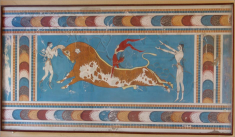Speaker
Description
The low-energy QCD, the theory within the Standard Model describing the strong interaction, is still missing fundamental experimental results in order to achieve a breakthrough in its understanding. Among these experimental results, the low-energy kaon-nucleon/nuclei interaction studies are playing a key-role, with important consequences going from particle and nuclear physics to astrophysics (neutron stars).
Combining the excellent quality kaon beam delivered by the DANE collider in Frascati (Italy) with new experimental techniques, as fast and very precise X ray detectors, like the Silicon Drift Detectors, we have performed unprecedented measurements in the low-energy strangeness sector in the framework of the SIDDHARTA Collaboration and are presently running the SIDDHARTA-2 experiment for the challenging kaonic deuterium measurement.
I shall introduce the physics of kaonic atoms, the present experiment with its preliminary results, and future opportunities.
The experiments at the DANE collider represents an opportunity unique in the world to, finally, unlock the secrets of the QCD in the strangeness sector and contribute to better understand the role of strangeness in the Universe, from nuclei to the stars.
Details
Luca De Paolis, Postdoc, Laboratori Nazionali di Frascati, Italy, www.lnf.infn.it
| Is this abstract from experiment? | Yes |
|---|---|
| Name of experiment and experimental site | Siddharta2 |
| Is the speaker for that presentation defined? | Yes |
| Internet talk | Yes |
